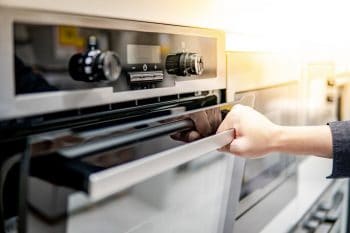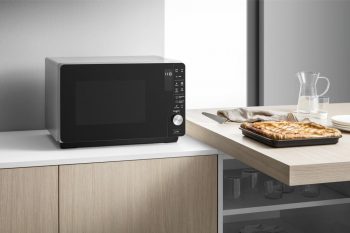
Albert T. Marshall, an American inventor, revolutionized food preservation and distribution with his invention of the mechanical refrigerator in 1899. His goal was to create a more efficient and automatic way to regulate temperature and cooling, which significantly improved food storage and transportation, allowing perishable food to travel longer distances without spoiling.
Albert T. Marshall invented the refrigerator to revolutionize the way food was preserved and distributed. His invention provided an efficient and automatic way to regulate temperature and cooling, allowing perishable food to travel longer distances without spoiling. Marshall’s refrigerator improved upon earlier models by automatically regulating the admission of the refrigerating medium (anhydrous ammonia) to the expansion pipes or chambers and combining a thermostat and rheostat to automatically control the pump motor.
Who was Albert T. Marshall?
Albert T. Marshall patented the first mechanical refrigerator on August 8, 1899. The patent, titled “Automatic expansion-valve for refrigerating apparatus,” had the publication number 630,617. Marshall’s invention included an automatic motor cut-off in case it was needed and a means for regulating the expansion valve. Sadly, not much information is available about his personal background or education.
The State of Food Preservation Technology Before the Refrigerator
Before the invention of the refrigerator, people used various food preservation methods to keep their food fresh. These methods ranged from pickling, smoking, and curing to storing in cool locations such as cellars, caves, and wooden or clay containers. Community cooling houses were integral parts of many villages and were used to store meat, fruit, and vegetables. Ice houses, built underground or as insulated buildings, were used to store ice and snow sourced during winter to keep foods cold during the warmer months.
The Motivation Behind Marshall’s Invention
Marshall was motivated to invent the refrigerator to improve the preservation of perishable food items and to provide a more efficient and automatic way of cooling. His invention aimed to automatically regulate the admission of the refrigerating medium (anhydrous ammonia) to the expansion pipes or chambers, as well as to combine a thermostat and rheostat to automatically control the pump motor.
How Marshall’s Refrigerator Worked
Marshall’s refrigerator, patented in 1899, was an “Automatic Refrigerating Apparatus” designed to automatically regulate the admission of the refrigerating medium (anhydrous ammonia) to the expansion pipes or chambers. It also combined a thermostat and rheostat to automatically control the pump motor. Marshall added an automatic motor cut-off in case it was needed and a means for automatically regulating the water used for cooling the refrigerant.
The Challenges Marshall Faced
Marshall faced several challenges during the invention process of the refrigerator. One of the main challenges was the competition from other inventors who had already made significant contributions to refrigeration technology. Another challenge was the need to develop a safe and efficient refrigeration system, which he addressed by inventing an “Automatic Refrigerating Apparatus” that included an automatic motor cut-off, a means for automatically regulating the water used for cooling the refrigerant, and a thermostat and rheostat to automatically control the pump motor.
The Impact of Refrigerators on Home Appliances and Lifestyle
The refrigerator changed the course of home appliances and lifestyle by revolutionizing food preservation, transportation, and consumption. Refrigerators eliminated the need for ice houses and other crude means of keeping food cool, making food preservation more efficient and reliable. They also led to a reduction in food waste, as spoilage was better controlled. Furthermore, refrigeration allowed for the consumption of fresh food year-round, as well as the availability of a greater variety of food options, including fruits, vegetables, meat, and dairy products.
The Impact on the Food Industry and Commercial Refrigeration
Marshall’s invention of the mechanical refrigerator had a significant impact on the food industry and commercial refrigeration. His invention paved the way for further advancements in refrigeration technology, making it safer, more efficient, and more accessible to both commercial and residential users.
The Legacy of Marshall’s Invention Today
Today, refrigerators are an essential appliance in households and businesses worldwide. The invention of the refrigerator has had a profound impact on home appliances and lifestyle by revolutionizing food preservation, transportation, and consumption. It has led to the development of the global cold chain, increased the variety of food available to consumers, improved food safety, and changed the way people shop for and consume food.
The Benefits of Marshall’s Refrigerator Over Earlier Models
Marshall’s refrigerator offered several benefits over earlier models. One of the key advantages was the automatic regulation of the refrigerating medium (anhydrous ammonia) admission to the expansion pipes or chambers. This allowed for better temperature control and efficiency. Additionally, Marshall’s design combined a thermostat and rheostat to automatically control the pump motor, further enhancing the refrigerator’s performance.
In conclusion, Albert T. Marshall’s invention of the mechanical refrigerator has left a lasting legacy in the form of improved food preservation and distribution, as well as advancements in various industries that rely on temperature control. His invention not only revolutionized how we store and consume food, but it also paved the way for modern refrigeration technology that we use today.
Frequently Asked Questions
What is anhydrous ammonia and why was it used in Marshall’s refrigerator?
Anhydrous ammonia is a colorless, highly irritating gas with a sharp, suffocating odor. It was used in Marshall’s refrigerator as a refrigerant, which is a substance that absorbs heat from the environment. It was used because of its high refrigerating capacity and low cost.
What is a thermostat and rheostat and how did they function in Marshall’s refrigerator?
A thermostat is a device that automatically regulates temperature, or that activates a device when the temperature reaches a certain point. A rheostat is a device that controls current flow with variable resistance. In Marshall’s refrigerator, the thermostat and rheostat were used to automatically control the pump motor, enhancing the refrigerator’s performance.
What is the global cold chain?
The global cold chain is a temperature-controlled supply chain. It includes all the means used to ensure a constant temperature for a product that is not heat stable from the time it is manufactured until the time it is used.
How did Marshall’s refrigerator reduce food waste?
Marshall’s refrigerator reduced food waste by providing a more efficient and reliable way to preserve food. By controlling the temperature, it slowed down the spoilage of perishable food items, hence reducing the amount of food that would otherwise be wasted.
What were the significant contributions of other inventors to refrigeration technology that competed with Marshall?
Other inventors like Carl von Linde and James Harrison had also made significant contributions to refrigeration technology. They developed different types of refrigeration systems, including vapor-compression refrigeration and gas absorption refrigeration, which competed with Marshall’s invention.












